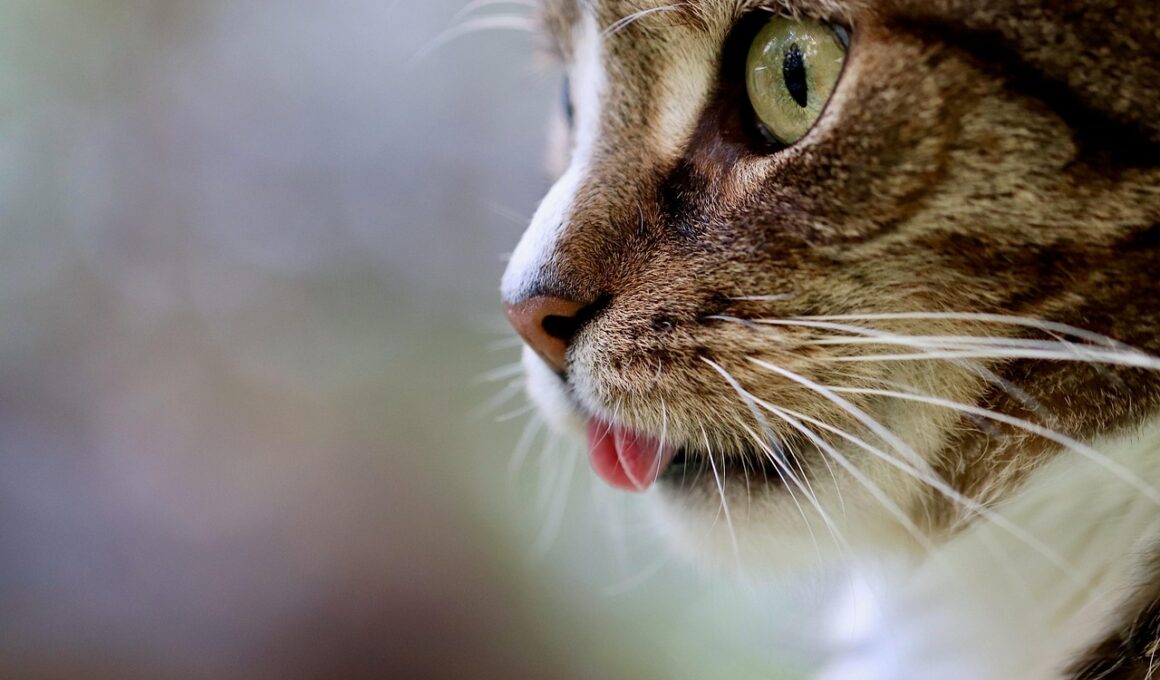Pancreatic Adenocarcinoma in Cats: Signs and Prognosis
Pancreatic adenocarcinoma is a severe type of cancer affecting cats that can lead to significant health issues. This form of cancer arises from the pancreatic duct and can often go undetected until it has reached an advanced stage. Symptoms may be vague but can include a sudden decline in appetite, weight loss, and lethargy. Vets often find that cats may exhibit abdominal pain when diagnosed. Due to its aggressive nature, early detection is crucial for improving survival chances. As this cancer is often identified alongside other diseases, it can complicate the clinical picture, making accurate diagnosis challenging. To assist in diagnosis, veterinary professionals may rely on imaging methods like ultrasound or CT scans. Blood tests may reveal atypical values, including high liver enzymes, indicating an issue. If you suspect your feline friend is showing symptoms associated with pancreatic disorders, it’s essential to consult your veterinarian. Treatment options vary depending on the stage of the disease but may involve surgery, chemotherapy, or palliative care aimed at enhancing quality of life.
The prognosis for cats diagnosed with pancreatic adenocarcinoma tends to vary based on several factors, such as the stage of the disease at diagnosis and the overall health of the cat. Most veterinarians regard the prognosis as guarded, emphasizing that early intervention can potentially enhance outcomes. The high metastatic potential worsens the outlook, as cancer cells can quickly spread to other organs, complicating treatment strategies. However, certain cats may respond well to aggressive treatments. In clinical settings, some cats have shown temporary improvement under chemotherapy protocols. It’s important to have detailed discussions with veterinary oncologists when considering the best course of action. Owners face tough decisions, balancing quality of life against extended survival. New research continues to explore better treatment options and protocols for managing this malignant condition. Support from pet care professionals can ease the emotional burden during treatment. Engaging in a support group or finding resources about feline pancreatic disorders can help cat owners navigate their path. Keeping a close eye on dietary needs and adjusting meals according to the veterinarian’s recommendations can potentially improve your cat’s overall health during this challenging time.
Symptoms to Watch For
Certain symptoms can signal a potential issue with your cat’s pancreas, which may include decreased appetite, vomiting, and noticeable weight loss. Cats may also develop gastrointestinal symptoms such as diarrhea or constipation. The presence of abdominal pain might be evident when petting the cat, indicating discomfort. Vigorous grooming or hiding behavior can also point to an underlying problem. Behavioral changes include increased lethargy or sleeping more than usual. If you notice your cat drinking excessive water or displaying signs of dehydration, it could suggest pancreatic issues. Monitoring your cat’s eating habits can be a useful way to gauge changes in health. If your cat begins to refuse food altogether or shows aversion to its usual diet, this is a red flag. Urgent veterinary care may be required if these symptoms are present. Keep a journal of the symptoms you observe and report these to the veterinarian during consultations. This documentation can be instrumental in diagnosing your cat’s condition. Understanding what constitutes normal behavior for your cat will help you recognize any deviations from the norm.
Diagnostic methods for determining pancreatic adenocarcinoma typically involve a combination of imaging tests, along with laboratory testing. Vets might recommend an ultrasound or X-ray to visualize abdominal organs, allowing them to identify any abnormalities. If there are indications of mass lesions, fine-needle aspiration biopsies may be performed. This technique involves extracting cells from the pancreas to determine the presence of cancerous cells. Blood tests can also provide critical insight; a complete blood count and biochemical profile help assess overall health. Elevated liver enzymes or abnormal glucose levels may point to additional pancreatic pathology. Understanding these diagnostic techniques aids in becoming proactive about a cat’s health. Choosing a veterinary practice experienced with feline pancreatic disorders ensures thorough evaluation. Suggestions for further testing, such as advanced imaging or potential referrals to oncology specialists, may be necessary. Regular check-ups and early diagnostics significantly affect outcomes, helping detect issues before they become critical. The burden of a cancer diagnosis is emotionally taxing for pet owners; hence, open communication with veterinarians is essential during this stressful period.
Treatment Options Available
Treatment for pancreatic adenocarcinoma in cats can be complex, often tailored to the individual cat’s condition and stage of disease. Surgical intervention to remove the tumor may be a primary option if the cancer is localized and hasn’t metastasized. However, if the cancer has spread, surgery may not be advisable. Palliative care is an essential aspect of treatment, focusing on comfort and quality of life rather than curative measures. Chemotherapy can sometimes be indicated, though results can be variable based on the individual cat’s response and tolerance to the drugs used. Additionally, dietary adjustments are crucial, with some cats benefiting from an easily digestible diet to manage symptoms. Veterinary oncologists can provide specific dietary recommendations tailored to the needs of cats undergoing treatment. Some experimental therapies or clinical trials may also be available for those looking for alternative options. Regular follow-up visits are necessary to monitor the cat’s response to any treatments. These visits help veterinarians evaluate the effectiveness of the prescribed therapy and make necessary adjustments.
Beyond conventional treatments, holistic approaches also play a role in managing cats with pancreatic adenocarcinoma. Acupuncture and nutritional support can help improve the overall well-being of the cat during treatment. Some cat owners explore herbal remedies, but it’s crucial to consult a veterinarian before introducing any new treatments. Supporting a stable environment is essential, helping reduce stress for cats battling cancer. Keeping the living space quiet and comfortable can encourage healing and minimize anxiety. The emotional aspect of dealing with cancer can weigh heavily on pet owners; hence, seeking support is advisable. Joining support groups or accessing resources on feline health can be immensely beneficial. Furthermore, understanding the lifecycle of pancreatic cancer in cats may help in managing expectations regarding outcomes. Continuous updates in veterinary medicine provide new insights into treatment options and may offer hope for improved strategies. Emphasizing quality time with the pet can foster strong emotional bonds and provide joyful moments together during tough times.
Conclusion
In conclusion, pancreatic adenocarcinoma is a challenging disease that affects cats and warrants prompt detection and treatment. Owners should remain vigilant regarding potential symptoms and seek veterinary assistance promptly. Early diagnosis significantly influences the prognosis, highlighting the importance of regular check-ups. While treatment options exist, the outcomes can vary, and it is essential to maintain open communication with veterinary professionals throughout the process. The emotional strain of a cancer diagnosis impacts both the pet and the owner, making supportive networks crucial. By remaining informed about advancements in treatment, cat owners can better navigate their options and make educated decisions for their pets. Participating in clinical trials or research may also be worthwhile for those looking for innovative treatments. Ultimately, fostering a loving environment during treatment enhances quality of life. By focusing on management strategies and regular monitoring, it is possible to improve the chances of a better outcome. Lastly, cherishing every moment with your feline companion during this journey is vital, as it strengthens the bond and ensures that their remaining time is as fulfilling as possible.
Understanding the mechanisms of pancreatic adenocarcinoma will allow cat owners to grasp the why behind various symptoms and treatment modalities. Recognizing that every cat is unique in presenting the disease can make handling it much easier. Having a clear treatment protocol with the support of veterinary specialists will provide a structured plan to follow. Continue to educate yourself about feline health and stay informed about any new treatment developments. Embracing proactive health measures can also improve overall wellbeing, further emphasizing the significance of regular veterinary visits. Using resources available for cat owners concerning pancreatic health can guide decisions and provide comfort. The journey of managing feline pancreatic disorders is undeniably complex, filled with uncertainty, and requires adjustments along the way. Collaborating with veterinarians to explore the best options enables informed choices that promote health. Maintaining transparency on treatment results can also facilitate needed changes in approach. Ultimately, creating a positive environment while addressing comfort needs is essential. Building strong relationships with veterinary professionals can ensure that comprehensive care frameworks are established. All these components together create a holistic approach to dealing with pancreatic disorders effectively.


